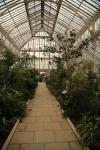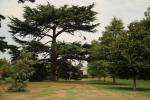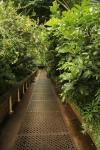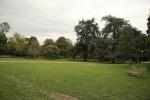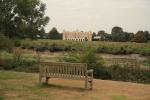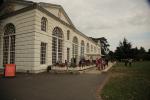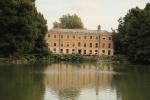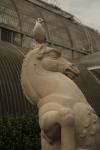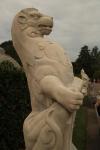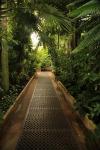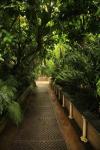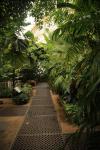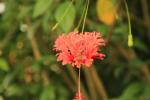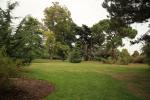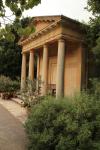Tuesday 4th September 2018
We have just nicely returned home from a lovely short break with my family and a visit to Kew Gardens.
We were staying with my youngest son and his wife just north of London, some eleven miles from Kew. They had bought us both a free ticket to look around the gardens at Kew as a Christmas present from this last Christmas, so thought it is about time we made the visit. I had studied the road map and didn’t really fancy the drive across London to the South Bank. The train service into London looked very good so we caught the over ground train to Willesden Junction and changed there for Kew Station, what should have taken about one hour took nearly two hours because of a broken down train but that is another story.
We arrived at Kew station at about 11oclock and what a lovely Victorian station it is, it was opened on January 1st in 1869. As we got off the train the platform was a picture with tropical plants and arrangements on both sides of the track, after leaving the station the area outside was just as picturesque with planting, floral arrangements, hanging baskets and planters in front of the small café’s and shops, if you didn’t know where you were you would have thought you were in a small Parisian village with the café’s, parasols and hanging baskets. The gardens at Kew are just a five hundred metre walk from the station. I thought about having a coffee break but resisted the temptation. It was only a few minutes’ walk to the Victoria Gate entrance at Kew and after showing our tickets made our way to the coffee shop for a sit down and some light refreshment whilst we planned out the rest of our day. After our coffee and cake the first thing I did was to purchase a pair of tickets for the road train which takes you around the gardens, at £5 per person the train takes you around the park at a leisurely pace stopping at seven places of interest, you can get on and off the train at any of these stops throughout the day and with the trains running approximately every forty minutes, the aim being that to cut down on walking we could look at the places we fancied and come back to them after our circular tour on the train. The journey takes approximately forty minutes with a running commentary from the driver which was interesting and informative. We decided that we wanted to have a look in the three tropical glass houses and if time allowed a walk over to the Great Pagola.
Our first stop was a short walk from Victoria Gate to the Palm House, constructed between 1844 -1847, it is one of the most important Victorian structures still in existence. It was built to house palms and other tropical trees that were being sent to Kew from around the world. The house is headed by what looks like a system of steam pipes which circulate the warm air through an iron grated floor. The heat inside the Palm house was quite over powering and Jenny only stayed in for a few minutes before having to go outside for the fresh air. Measuring some 110 metres in length, 30 metres wide by 19 metres tall it is quite a significant greenhouse. A spiral staircase takes you up into the roof of the house and gives a great view of the tropical plants below. The grade one listed building has seen two major restorations, the first in 1955 and the most recent between 1984-1988. I spent a good thirty minutes browsing the plants whilst my cameras acclimatised to the significant change in temperature. It was well worth a look round and interesting to see after seeing it many times on the television.
It is a short walk from the Palm House passing King Williams Temple to the huge Temperate House. This was reopened earlier this year after a massive refurbishment. The Temperate House is twice the size of the Palm House and built between 1862 and 1899. It is the world’s largest surviving Victorian glass structure. It’s purpose was to house frost tender plants from the sub-tropical and warm temperate parts of the world. Today the building is light and airy and divided into zones, the central section houses plants from Central and South America, New Zealand, Australia and from islands around the world. The north wing houses plants from Asia whilst the south wing has plants from South Africa. It is estimated that this house houses over 10,000 plants of which some 1,500 species are of specific scientific importance.
Conveniently situated to the west of the Temperate House is the food village selling a whole of different types of cuisine and an ideal place to stop for some refreshment.
After lunch we left the comfort of the food village and headed south to have a look at the Japanese Pagoda. The Pagoda was completed in 1762 as a gift for Princess Augusta the founder of the botanic gardens here at Kew. The ten-storey octagonal structure stands at 50 metres tall, inside the staircase of 253 steps takes you up to the upper level. The upkeep of the Pagoda is the responsibility of the ‘Historic Royal Palaces’ and since 2017 have been busily restoring it to its former glory. From the Pagoda we retraced our steps, past the Temperate House and Palm House to the Waterlily House, where we stopped for a look at the giant waterlilies, some of the green pads must have been well over a metre in diameter and with a flanged lip made for quite a picture. From the Waterlily house we headed North Eastwards to the Princess of Wales Conservatory, opened in 1987 by Diana, Princess of Wales. The Conservatory unlike the Palm House and Temperate House is of a modern energy efficient design and very much a low profile design. Much of the planting inside is below ground level which helps to insulate it against heat loss. There are ten different landscaped zones inside the conservatory each with their own carefully controlled climate zones to recreate that range of environments from Tropical Desert to rainforest. It is a light and airy building with some remarkable and unusual plants.
By now the time had flown by and it was late afternoon, we headed back to the visitors centre at Victoria Gate for a coffee before the short walk back to Kew Station and the journey home. It is definitely worth another visit especially in the Autumn when the leaves on the trees start changing colour, equally in early spring when the trees start opening up from their winter shutdown.
|

